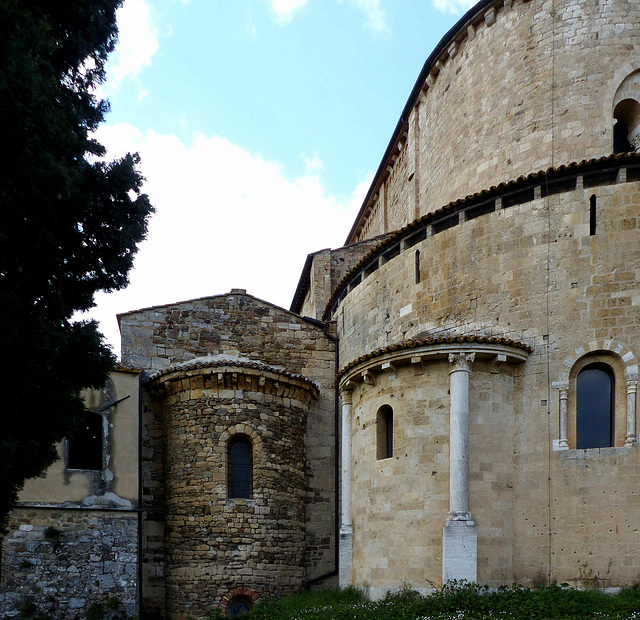Abbazia di Sant'Antimo
Montesiepi - Eremo di Montesiepi (PiP)
Montesiepi - Abbazia di San Galgano
Montesiepi - Abbazia di San Galgano
Montesiepi - Abbazia di San Galgano
Frosini
Rosia - Pieve di San Giovanni Battista
Rosia - Pieve di San Giovanni Battista
Rosia - Pieve di San Giovanni Battista
Sovicille - Area archeologica di Malignano
Sovicille - Area archeologica di Malignano
Eremo di San Salvatore di Lecceto
Eremo di San Salvatore di Lecceto
Eremo di San Salvatore di Lecceto
Eremo di San Salvatore di Lecceto
Siena
Siena - Basilica di San Domenico
Siena - Basilica di San Domenico
Siena - Basilica di San Domenico
Siena - Cattedrale Metropolitana di Santa Maria As…
Siena - Cattedrale Metropolitana di Santa Maria As…
Siena - Cattedrale Metropolitana di Santa Maria As…
Siena - Cattedrale Metropolitana di Santa Maria As…
Abbazia di Sant'Antimo (PiP)
Abbazia di Sant'Antimo
Abbazia di Sant'Antimo
Acquapendente - Basilica Santo Sepolcro
Acquapendente - Basilica Santo Sepolcro
Acquapendente - Basilica Santo Sepolcro
Orvieto
Orvieto - Pozzo di S. Patrizio
Orvieto - Pozzo di S. Patrizio
Orvieto - Pozzo di S. Patrizio
Orvieto - Pozzo di S. Patrizio
Orvieto
Orvieto - San Stefano
Orvieto - San Stefano
Orvieto - San Giovenale
Orvieto - San Giovenale
Orvieto - San Giovenale
Orvieto - Sant'Andrea
Orvieto - Piazza della Repubblica
Orvieto - Duomo di Orvieto
Orvieto - Duomo di Orvieto
Orvieto - Duomo di Orvieto
Location
See also...
Keywords
Authorizations, license
-
Visible by: Everyone -
All rights reserved
-
20 visits
Abbazia di Sant'Antimo


It is proven, that the Abbazia di Sant'Antimo existed since Carolingian times. Legends (of course) know, that it was Charlemagne himself, who founded the abbey when he had left Rome, following the Via Francigena northward. The earliest document relating to the abbey is a land grant of Charlemagne´s son Louis the Pious from 813.
One year after the 1117 earthquake the erection of the church of today started. At that time the powerful abbey was one of the largest landowners in the area. As sovereigns and imperial officials at the same time, they also levied taxes.
The decline began with Siena's awakening striving for power, which conquered Montalcino in 1212. In the following decades, the property of the monastery shrank to a fifth. The church was never completed in the years that followed, as the complex construction probably exceeded the abbey's financial possibilities. A sign of decay is the unfinished facade.
New religious ideas gained influence. The then new orders of the Franciscans and Dominicans, whose monasteries were not built in the cities, gained strength. The Benedictine wish to be able to follow the rule ora et labora in seclusion was pushed into the background.
In 1462 Pope Pius II suppressed the abbey, annexed whatever was left - and handed it over to the Bishop of Montalcino-Pienza, who was his nephew.
1992 the abbey became an active monastery again with the arrival of a new congregation of Canons Regular of the Premonstratensian Order.
The architecture seems influenced by churches in Burgundy. It looks a bit like a sibling of the church at Vignory in Champagne.
The small apse on the left dates back to Carolingian times
One year after the 1117 earthquake the erection of the church of today started. At that time the powerful abbey was one of the largest landowners in the area. As sovereigns and imperial officials at the same time, they also levied taxes.
The decline began with Siena's awakening striving for power, which conquered Montalcino in 1212. In the following decades, the property of the monastery shrank to a fifth. The church was never completed in the years that followed, as the complex construction probably exceeded the abbey's financial possibilities. A sign of decay is the unfinished facade.
New religious ideas gained influence. The then new orders of the Franciscans and Dominicans, whose monasteries were not built in the cities, gained strength. The Benedictine wish to be able to follow the rule ora et labora in seclusion was pushed into the background.
In 1462 Pope Pius II suppressed the abbey, annexed whatever was left - and handed it over to the Bishop of Montalcino-Pienza, who was his nephew.
1992 the abbey became an active monastery again with the arrival of a new congregation of Canons Regular of the Premonstratensian Order.
The architecture seems influenced by churches in Burgundy. It looks a bit like a sibling of the church at Vignory in Champagne.
The small apse on the left dates back to Carolingian times
Alexander Prolygin has particularly liked this photo
- Keyboard shortcuts:
Jump to top
RSS feed- Latest comments - Subscribe to the comment feeds of this photo
- ipernity © 2007-2024
- Help & Contact
|
Club news
|
About ipernity
|
History |
ipernity Club & Prices |
Guide of good conduct
Donate | Group guidelines | Privacy policy | Terms of use | Statutes | In memoria -
Facebook
Twitter

Sign-in to write a comment.